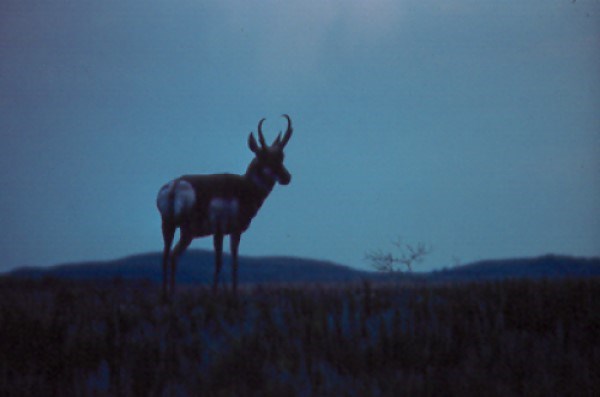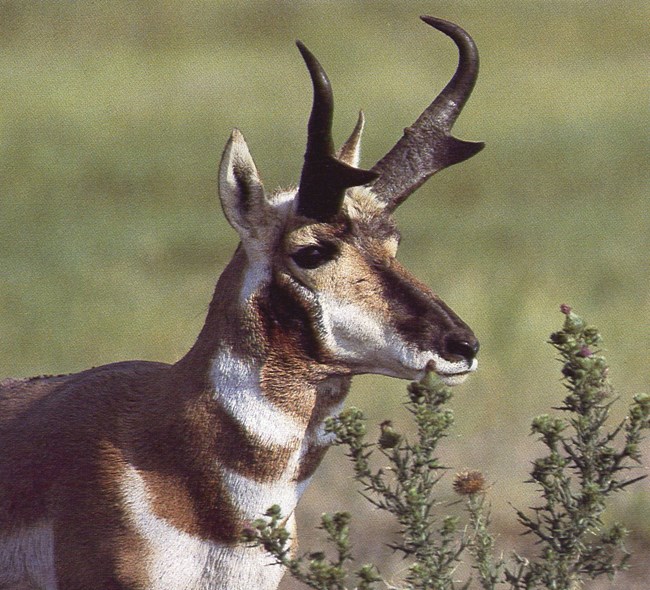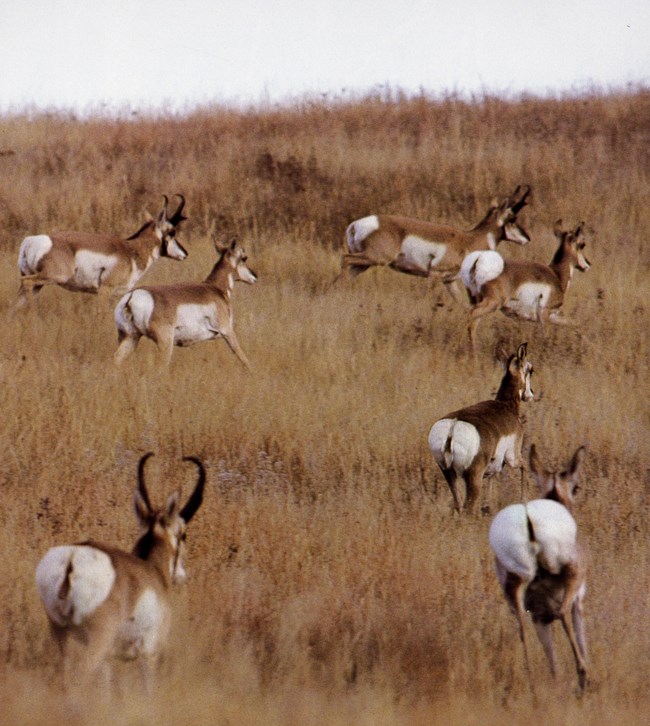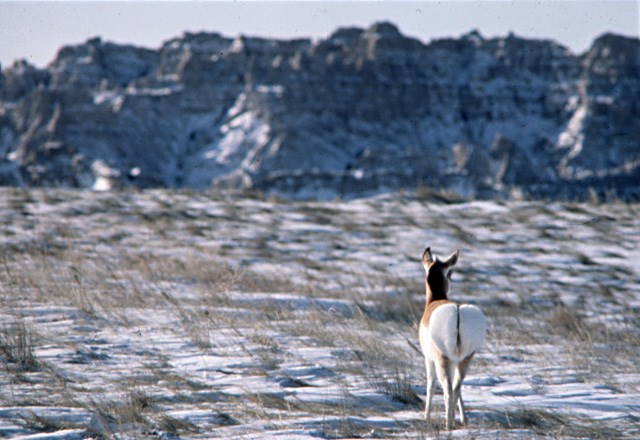Part of a series of articles titled Wildlife in the Badlands.
Previous: Prairie Dogs: Pipsqueaks of the Prairie
Next: Reptiles of the Badlands
Article

NPS Photo

NPS Photo
Badlands National Park is home to the pronghorn, also known as the pronghorn antelope. While the pronghorn is not a true antelope, it displays some of the same traits as the true antelopes of Asia and Africa. This is due to convergent evolution, a process where unrelated species evolve similar traits to thrive in similar environments. The Pronghorn is the only living member of the family antilocapridae and is most closely related to the giraffe!

NPS Photo
Pronghorn can often be mistaken at a distance for deer, but up close, the two animals are easy to tell apart. Pronghorn are much smaller than deer, standing roughly three feet high at the shoulder. They have distinct white patches of fur on the rump, side, belly, and throat. Male pronghorn grow pronged horns up to a foot long (giving the animal its name) while females grow much smaller straight horns. Unlike the antlers of a deer, pronghorn horns grow around a bony, skin-covered core that is not shed – but unlike the horn of a bison, the outer sheath of keratin that makes up the horn is shed and regrown.
Pronghorn are found in the open prairies of western North America, including Canada and Mexico. They are grazing animals that eat the shrubs, grasses, and forbs that grow on the plains. They also use the open space of the prairie to evade predators, thanks to an incredible quality they possess…

NPS Photo
Perhaps the most amazing thing about the Pronghorn is its speed. Due to their long legs, light bodies, large windpipes, and cushioned hooves, pronghorn can sustain speeds of 55 mph for half a mile, and speeds approaching 45 mph for much longer distances. None of the predators in their range can run anywhere near as quickly, making this exceptional speed somewhat of a mystery. Scientists believe that the pronghorn developed this exceptional speed to escape from the American Cheetah, a blindingly fast ambush predator that lived in North America until roughly 12,000 years ago.

NPS Photo
In the Badlands, pronghorn are most frequently seen in unbroken grasslands. In the North Unit, they can be found north of the Badlands Loop Road (240) and in the Buffalo Gap National Grassland adjacent to the park. Sightings have also been reported above and below Sheep Mountain Table on the North Unit/South Unit boundary.
Part of a series of articles titled Wildlife in the Badlands.
Previous: Prairie Dogs: Pipsqueaks of the Prairie
Next: Reptiles of the Badlands
Last updated: November 10, 2020